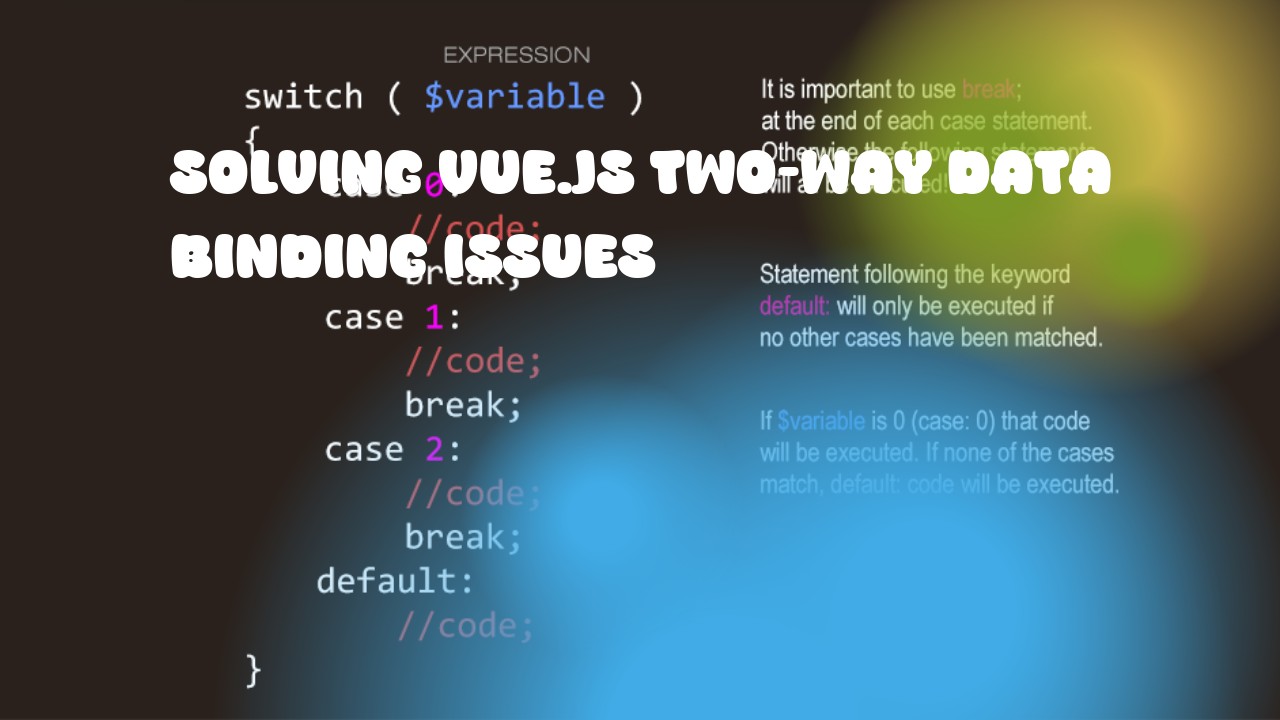Vue.js is a popular front-end framework that allows developers to create reactive applications with its built-in data binding feature. However, some developers may encounter issues with two-way data binding in Vue.js, especially when dealing with nested objects or arrays. Here are some common problems and solutions:
- Problem: Trying to modify a nested object directly can lead to unexpected behavior.
Solution: Use the
Vue.setmethod to update a nested object. This method ensures that Vue can track the change and trigger updates in the component view. Example code:
<template>
<div id="app">
<p>{{ user.name }}</p>
<input type="text" v-model="user.name">
</div>
</template>
<script>
export default {
data() {
return {
user: {
name: 'John Doe'
}
};
},
methods: {
updateName(newName) {
this.user = Vue.set(this.user, 'name', newName);
}
}
};
</script>
- Problem: Trying to modify an array directly can lead to unexpected behavior.
Solution: Use the
Vue.setmethod or theArray.prototype.splicemethod to update an array. This method ensures that Vue can track the change and trigger updates in the component view. Example code:
<template>
<div id="app">
<ul>
<li v-for="(item, index) in items" :key="index">{{ item }}</li>
</ul>
<button @click="addItem">Add Item</button>
</div>
</template>
<script>
export default {
data() {
return {
items: ['Apple', 'Banana']
};
},
methods: {
addItem() {
this.items = [...this.items, 'Cherry'];
}
}
};
</script>
- Problem: Trying to modify an array directly can lead to unexpected behavior.
Solution: Use the
Array.prototype.push,pop,shift, orunshiftmethods to update an array. Vue will automatically track these changes and trigger updates in the component view. Example code:
<template>
<div id="app">
<ul>
<li v-for="(item, index) In items" :key="index">{{ item }}</li>
</ul>
<button @click="addItem">Add Item</button>
</div>
</template>
<script>
export default {
data() {
return {
items: ['Apple', 'Banana']
};
},
methods: {
addItem() {
this.items.push('Cherry');
}
}
};
</script>
- Problem: Trying to modify an array directly can lead to unexpected behavior.
Solution: Use the
Vue.setmethod or theArray.prototype.splicemethod to update an array at a specific index. this method ensures that Vue can track the change and trigger updates in the component view. Example code:
<template>
<div id="app">
<ul>
<li v-for="(item, index) In items" :key="index">{{ item }}</li>
</ul>
<button @click="addItem">Add Item</button>
</div>
</template>
<script>
export default {
data() {
return {
items: ['Apple', 'Banana']
};
},
methods: {
addItem() {
this.items = [...this.items, ...this.items.slice(0, 1)];
}
}
};
</script>
In summary, Vue.js provides a few solutions to address two-way data binding issues with nested objects or arrays. These include using the Vue.set method for updating nested objects and the Array.prototype methods for updating arrays.

